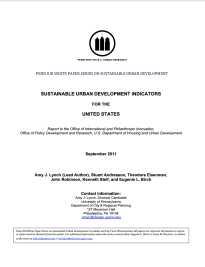Key Message
The development of a standardized system of sustainable urban development indicators is crucial for assessing and guiding urban policies and practices. The study highlights several key findings. There is a pressing need for a unified set of indicators that can provide a comprehensive view of sustainable urban development across various dimensions, including environmental quality, economic opportunity, and social wellbeing. Analysis of existing indicator systems revealed significant gaps, particularly in measuring social wellbeing and economic opportunity. Many systems lack indicators that cover essential aspects such as growth plans leveraging existing assets and access to capital and credit. Effective indicators should encompass multiple dimensions to provide a holistic view of sustainability. Indicators must be specific, measurable, achievable, relevant, and time-related (SMART). Successful implementation of a standardized indicator system requires collaboration among federal, state, and local governments, as well as private and non-profit sectors. The system should be adaptable to different city contexts and continuously updated to reflect emerging trends and challenges. The proposed indicators aim to inform and support policies that promote sustainable development. They provide a basis for evaluating the effectiveness of urban initiatives and investments, ultimately contributing to the creation of resilient, equitable, and prosperous urban environments.


